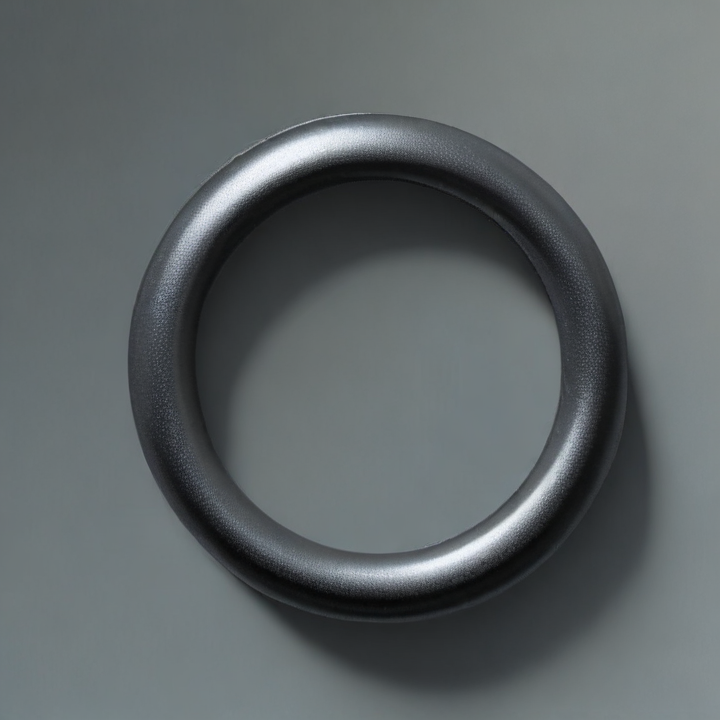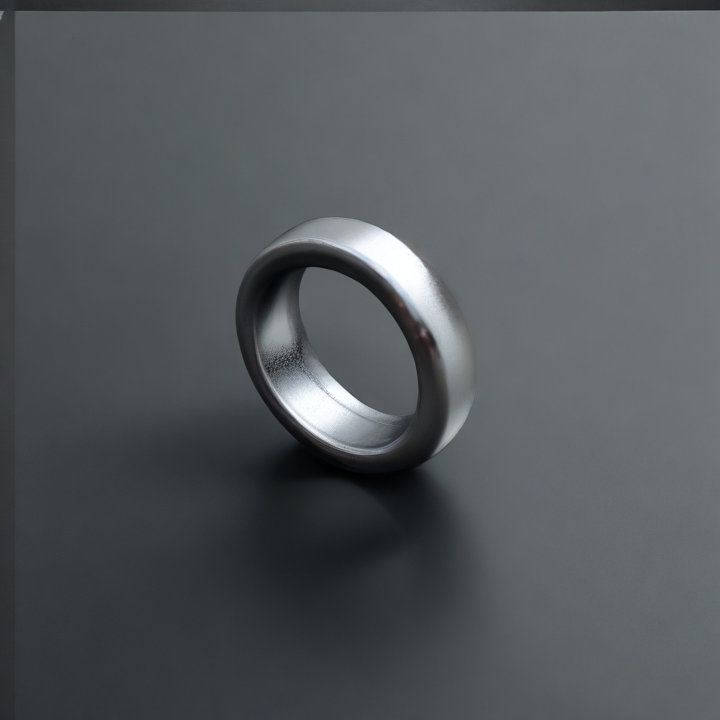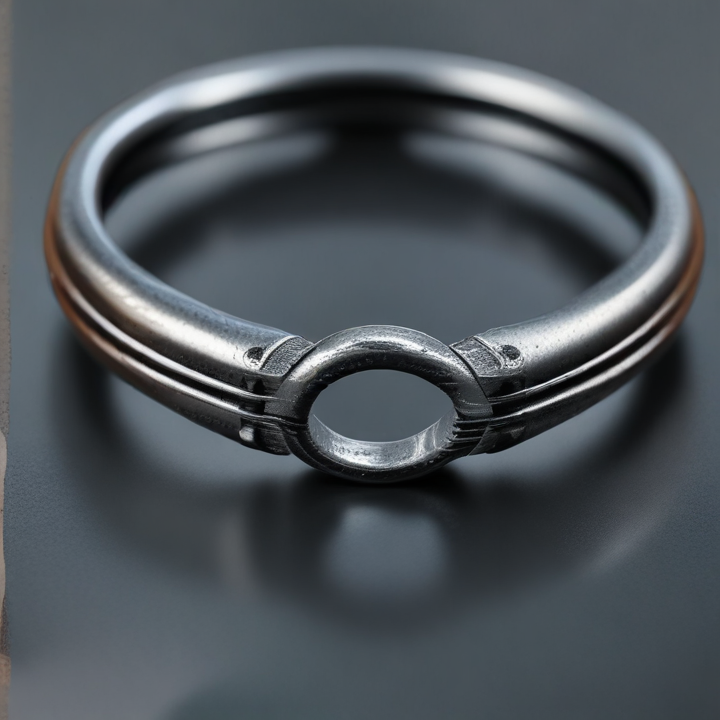custom o-ring Safety Certifications
Custom O-Rings, crucial components in various industrial applications, must meet stringent safety certifications to ensure reliability and performance. Below are key certifications to consider when selecting or manufacturing custom O-Rings:
1. ISO 9001: This international standard certifies quality management systems, ensuring that custom O-Ring manufacturing processes consistently meet customer and regulatory requirements.
2. FDA (Food and Drug Administration): Essential for O-Rings used in food, beverage, and pharmaceutical industries, FDA certification ensures that the materials are safe for direct contact with consumables.
3. NSF (National Sanitation Foundation): Also relating to safety in food, water, and consumer product applications, NSF certification ensures that the O-Rings meet stringent health and safety guidelines.
4. ROHS (Restriction of Hazardous Substances): This EU directive certifies that the materials used in O-Rings are free from or limited in hazardous substances, promoting safer environmental practices.
5. REACH (Registration, Evaluation, Authorization, and Restriction of Chemicals): This certification guarantees that all chemicals used in the O-Ring manufacturing process are thoroughly evaluated and controlled, ensuring no harm to human health and the environment.
6. UL (Underwriters Laboratories): For industries where fire safety is critical, UL certification ensures the O-Rings meet specific performance requirements under standard testing conditions.
7. ASTM (American Society for Testing and Materials): O-Rings should meet relevant ASTM standards for material properties, ensuring compatibility and performance under various conditions.
8. ISO 3601: This standard specifically pertains to O-Rings, describing dimensional and tolerance requirements, which guarantees uniformity and reliability in applications.
These certifications not only confirm the safety and quality of custom O-Rings but also facilitate compliance with industry and international regulations, thus ensuring user confidence and broad applicability.
List Reference Technical Parameters of "custom o-ring"
Creating a custom O-ring involves several technical parameters to ensure it meets specific application requirements:
1. Material Composition:
- Elastomers: Common materials include Nitrile (NBR), Fluorocarbon (Viton), Silicone, EPDM, and FFKM.
- Temperature Resistance: Materials should match the operating temperature range, from low (-60°C) to high (up to +300°C).
2. Dimensions:
- Inner Diameter (ID): Exact diameter needed to fit the mating component.
- Outer Diameter (OD) and Cross-Section Width: Ensures proper sealing and fit.
- Tolerance: Precision in dimensions for reliable performance, typically ±0.05 mm for the ID and OD.
3. Hardness (Shore A):
- Varies depending on application; typically between 40 to 90 Shore A. Harder materials for higher pressure, softer for lower pressure and better adaptability.
4. Compression Set:
- Measures the material’s ability to return to its original thickness after compression. Lower values indicate better performance in retaining shape.
5. Application Environment:
- Chemical Resistance: Resistance to fluids or chemicals the O-ring will be exposed to.
- Pressure Rating: Must handle the pressure load in both dynamic (moving) and static (stationary) applications.
6. Surface Finish:
- Smooth or textured, depending on the need for grip or ease of installation.
7. Color:
- For identification or compatibility with regulatory standards.
8. Regulatory Compliance:
- Should meet industry standards such as FDA, RoHS, or UL depending on the application.
9. Custom Profiles:
- Cross-sectional shapes like X, D, or square profiles for specific sealing needs.
10. Durability:
- Longevity under specified service conditions, considering wear resistance, and aging properties.
Careful consideration of these parameters ensures the custom O-ring will provide effective and reliable sealing solutions tailored to specific needs.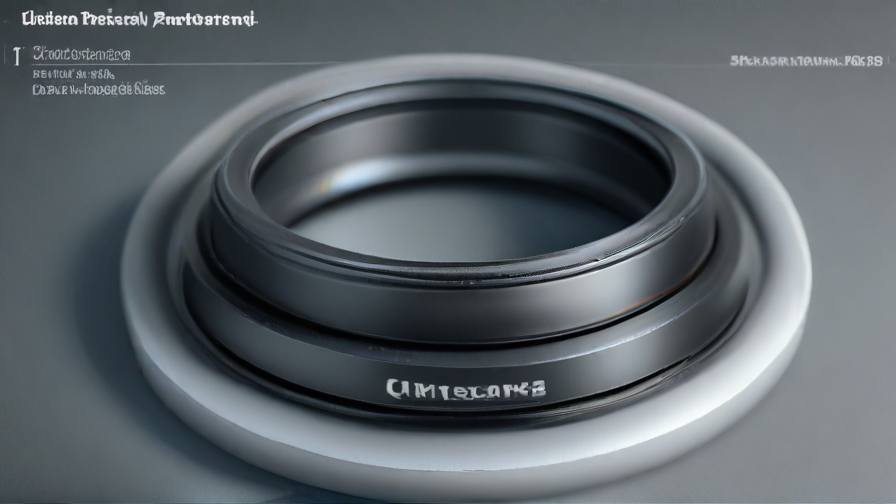
List Product features of "custom o-ring"
Product Features of Custom O-Ring:
1. Tailored Dimensions:
- Customizable size, thickness, and cross-sectional diameter to fit specific applications.
- Available in various standard and non-standard sizes.
2. Material Versatility:
- Fabricated from a wide range of materials including Nitrile (NBR), Silicone, Fluorocarbon (Viton), Neoprene, EPDM, and others.
- Compatibility with different environmental conditions and chemical exposures.
3. Temperature Resistance:
- Designed to withstand extreme temperature ranges, from cryogenic to high-heat applications.
- Specific materials selected to perform optimally in the required thermal environments.
4. Chemical Resistance:
- Customized to resist degradation from exposure to specific chemicals, oils, and solvents.
- Ideal for use in harsh chemical environments.
5. Durability and Longevity:
- Superior wear resistance and longevity, reducing the need for frequent replacements.
- Helps in maintaining system integrity and reducing downtime.
6. Seal Performance:
- Ensures a tight, reliable seal to prevent leakage and maintain system pressure.
- Effective in both static and dynamic applications.
7. Compliance and Standards:
- Manufactured to meet industry standards such as ISO, FDA, and RoHS compliance.
- Ensures safety and reliability for specialized applications.
8. Application-Specific Designs:
- Engineered to meet the unique requirements of various industries, including automotive, aerospace, medical, and industrial sectors.
- Ability to handle specific pressures, movements, and stress loads according to the application.
9. Color and Finish Options:
- Offer different color options for easy identification and aesthetic requirements.
- Smooth, polished finishes or textured surfaces based on specific needs.
10. Prototyping and Testing:
- Availability of sample prototypes for testing and validation.
- Comprehensive testing to ensure performance and compatibility with the intended application.
By addressing the specific needs of different applications, custom O-rings offer enhanced performance, reliability, and longevity, driving operational efficiency and reducing maintenance costs across various industries.
List Various Types of "custom o-ring"
Certainly! Custom O-rings are specially designed O-rings tailored to meet specific application requirements. Here's a brief overview of various types:
1. Material-Based Custom O-Rings:
- Nitrile (Buna-N): Known for oil resistance and widely used in automotive and industrial applications.
- Silicone: Offers excellent temperature resistance and flexibility, ideal for medical and food applications.
- Viton (FKM): Provides high chemical and heat resistance, suitable for aerospace and chemical industries.
- EPDM: Excellent for outdoor applications due to its resistance to weather, ozone, and aging.
- Neoprene: Balanced properties for oil, weather, and chemical resistance.
2. Size-Based Custom O-Rings:
- Micro O-Rings: Tiny O-rings used in miniature devices and precision instruments.
- Large O-Rings: Custom sizes for large-scale industrial machinery and equipment.
3. Profile-Based Custom O-Rings:
- Square O-Rings: Instead of a round cross-section, these have a square cross-section for a better fit in specific applications.
- X-Rings (Quad Rings): X-shaped cross-section providing four sealing surfaces for enhanced sealing capabilities.
4. Color-Based Custom O-Rings:
- Colored O-Rings: Available in various colors for easy identification and to match industry standards.
5. Coating/Surface Treatment Custom O-Rings:
- PTFE Coated: For low friction and resistance to harsh chemicals.
- Lubricated O-Rings: Pre-lubricated to reduce installation force and wear.
6. Application-Specific Custom O-Rings:
- High Temperature O-Rings: Designed to withstand extreme temperatures in applications such as furnaces or engines.
- Food Grade O-Rings: Made from materials compliant with FDA regulations, suitable for food processing and packaging.
Custom O-rings are essential for applications where standard O-rings fail to meet the specific requirements of the usage environment or mechanical constraints. By selecting the appropriate type, industries can ensure optimal performance and longevity of their sealing solutions.
List Application of "custom o-ring"
Custom O-rings are tailored sealing solutions for various industrial and commercial applications. Here are some of their key utilizations:
1. Automotive Industry:
- Engine Seals: Ensures airtight sealing in engines, preventing leaks of oil and coolant.
- Fuel Systems: Custom O-rings are used to prevent fuel leaks and ensure proper functioning of injectors, pumps, and fuel lines.
2. Aerospace:
- Hydraulic Systems: Provide leak-proof seals for hydraulic actuators, pumps, and cylinders in aircraft.
- Cabin Pressurization: Used in the seals of aircraft doors and windows to maintain cabin pressure.
3. Medical Devices:
- Syringes and Pumps: Critical for maintaining sterile conditions and preventing fluid leaks in medical syringes, pumps, and dispensing equipment.
- Imaging Equipment: Ensure the proper functioning of diagnostic machines like MRI and CT scanners by providing reliable seals.
4. Oil and Gas:
- Drilling Equipment: Custom O-rings are essential for the high-pressure seals required in oil exploration and drilling operations.
- Valves and Flanges: Used in pipelines to prevent leaks in extreme conditions.
5. Food and Beverage Industry:
- Processing Equipment: Ensure sanitary and leak-proof operations in food processing machinery.
- Packaging: Provide airtight seals in food packaging to maintain freshness and hygiene.
6. HVAC Systems:
- Refrigerants Seals: Used in systems handling refrigerants to prevent leaks and ensure efficient performance.
- Ductwork: Custom O-rings ensure airtight seals in HVAC ductwork, enhancing energy efficiency.
7. Chemical Processing:
- Reactors and Mixers: Ensure containment of reactive and hazardous chemicals.
- Pumps and Valves: Provide reliable seals in equipment handling corrosive substances.
8. Pharmaceutical Industry:
- Sealing Reactors: Maintain sterile conditions and prevent contamination.
- Fluid Transfer Systems: Ensure leak-proof fluid transfer between containers and machinery.
Custom O-rings are indispensable in applications requiring specific size, material, and performance characteristics, providing reliable sealing solutions tailored to the unique demands of various industries.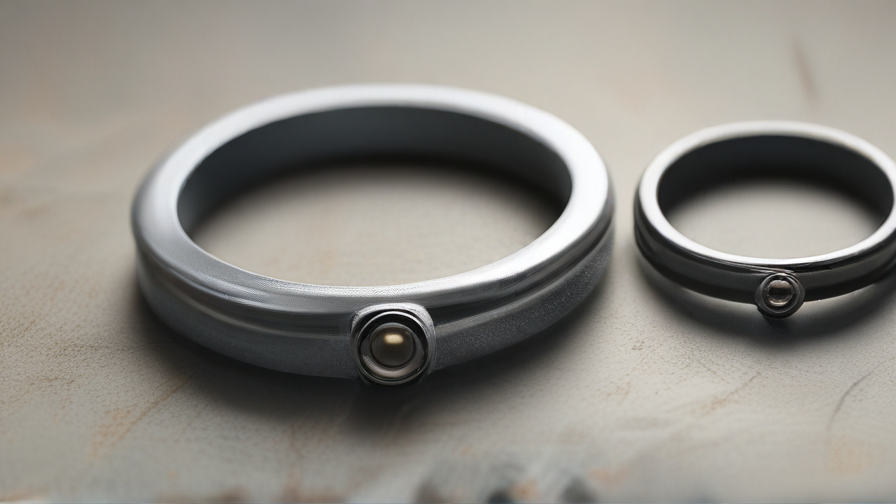
List Buyer Types of "custom o-ring"
When it comes to buying custom O-rings, the market can generally be segmented into several key buyer types. Each type has unique requirements and motivations:
1. OEM Manufacturers (Original Equipment Manufacturers):
- Industry Focus: Automotive, Aerospace, Medical Devices, Consumer Electronics.
- Needs: Large volumes, tight tolerances, specific material properties.
- Motivation: Ensuring product reliability and compliance with regulatory standards.
2. Maintenance, Repair, and Operations (MRO) Departments:
- Industry Focus: Manufacturing Plants, Facilities Management, Utilities.
- Needs: Quick turnaround, varied sizes, immediate availability.
- Motivation: Minimizing downtime, maintaining operational efficiency.
3. Distributors and Resellers:
- Industry Focus: Industrial Supply, Hardware Stores, Specialty Distributors.
- Needs: Broad range of sizes and materials, mid-range volumes.
- Motivation: Offering comprehensive solutions to end customers, maintaining inventory levels.
4. Research and Development (R&D) Departments:
- Industry Focus: Engineering Firms, Technology Innovators, Laboratories.
- Needs: Prototyping, small volumes, specialized materials.
- Motivation: Innovation, testing, and development of new products.
5. Aftermarket Parts Suppliers:
- Industry Focus: Automotive, Marine, Aerospace Aftermarket.
- Needs: Specific sizes matching OEM parts, medium to large volumes.
- Motivation: Ensuring compatibility with existing products, sustaining customer satisfaction.
6. Specialized Industrial Users:
- Industry Focus: Oil & Gas, Chemical Processing, Pharmaceuticals.
- Needs: High-performance materials, chemical resistance, durability.
- Motivation: Safety, reliability, meeting stringent regulatory requirements.
Each buyer type operates with distinct priorities and requirements, from bulk orders for manufacturing to small quantities for R&D. Vendors that understand these differences are more likely to succeed in meeting market needs effectively.
List "custom o-ring" Project Types for Different Industries
Certainly! Custom O-ring projects span a wide array of industries, each with its own set of specific requirements and challenges. Here are some common project types:
Aerospace
- Fuel Systems: Custom O-rings designed to withstand high pressures and varying temperatures.
- Cabin Sealing: O-rings that provide airtight seals under fluctuating environmental conditions.
Automotive
- Engine Components: Heat-resistant O-rings for seals in engines and exhaust systems.
- Brake Systems: O-rings made from materials that resist hydraulic fluids and extreme pressures.
Medical
- Surgical Instruments: Sterilizable and biocompatible O-rings for precise instrumentation.
- Diagnostic Equipment: O-rings that provide reliable seals in various medical devices.
Food & Beverage
- Processing Equipment: FDA-approved O-rings that meet hygiene standards.
- Bottling Plants: O-rings capable of withstanding cleaning agents and high-temperature processes.
Oil & Gas
- Drilling Equipment: O-rings that resist high pressure and chemical exposure.
- Pipeline Systems: Custom O-rings for dynamic and static sealing solutions under extreme conditions.
Industrial Machinery
- Hydraulic Systems: O-rings that endure high pressures and temperature fluctuations.
- Pneumatic Systems: Durable and flexible O-rings for reliable air-tight seals.
Electronics
- Waterproof Devices: O-rings designed to provide moisture barriers in electronic devices.
- Gasket Seals: Custom O-rings for electrical enclosures to safeguard against dust and water ingress.
Chemical Processing
- Reactor Vessels: O-rings that resist aggressive chemicals and high temperatures.
- Pumping Systems: Seals that are compatible with corrosive fluids.
Pharmaceutical
- Production Equipment: O-rings that comply with regulatory standards and resist chemical exposure.
- Packaging: Seals that ensure sterility in pharmaceutical products.
Custom O-rings are indispensable across industries, tailored to meet varying demands for durability, chemical resistance, and operational efficiency.
custom o-ring Accessories Upgrades and Custom Manufacturing Options
Custom O-ring accessories and upgrades offer tailored solutions for various industrial applications, ensuring optimal performance and durability. Here are several options to consider:
1. Material Selection: Choose from a wide range of materials such as silicone, EPDM, Nitrile, and Viton. Each material offers unique benefits—silicone is excellent for high-temperature environments, while EPDM is ideal for weather resistance.
2. Coatings and Treatments: Enhance O-ring performance with specialized coatings like PTFE for reduced friction or bonded coatings for increased wear resistance. Treatments can also improve chemical resistance or modify thermal properties.
3. Profile and Size Customization: Custom manufacturing allows for unique O-ring profiles and non-standard sizes, catering to bespoke requirements. Whether it’s a specific cross-sectional shape or an unusual diameter, custom options ensure a perfect fit.
4. Hardness Variability: Modify the durometer (hardness) of O-rings to match application demands. Softer O-rings provide better sealing in low-pressure environments, while harder ones offer durability in high-stress situations.
5. Specialty Compounds: Utilize specialty compounds designed to meet rigorous industry standards, such as FDA-approved materials for food and beverage applications or fire-retardant compounds for aerospace use.
6. Prototyping and Testing: Engage in prototyping and extensive testing to refine designs and ensure compatibility with your equipment. This phase minimizes risks and guarantees high performance in real-world applications.
7. Color Coding and Marking: Implement color coding or custom markings for easy identification and sorting, especially useful in complex assemblies or maintenance procedures.
8. Packaging and Delivery: Opt for custom packaging solutions like individually packaged O-rings or specific kit formations to streamline inventory management and application processes.
Custom O-ring accessories and upgrades not only enhance the performance and longevity of your seals but also maximize efficiency and reliability in your specific operational context.
List Quality Control and The Manufacturing Process of "custom o-ring"
Quality Control of Custom O-Rings
Quality control ensures that custom O-rings meet specific standards and customer requirements. The process includes:
1. Material Verification:
- Incoming Inspection: Raw materials are checked for purity, hardness, and compliance with specifications.
- Supplier Certification: Ensure suppliers provide materials that meet industry standards.
2. Dimensional Inspection:
- Tolerance Checks: Verify the O-ring dimensions (inner diameter, outer diameter, and cross-section) using calipers and optical comparators.
- Consistency: Random sampling from batches to ensure uniformity and adherence to tolerances.
3. Surface Inspection:
- Visual Checks: Inspect for defects like surface flaws, flash, or contamination.
- Automated Systems: Optical inspection systems can detect microscopic defects.
4. Physical and Chemical Testing:
- Tensile Strength: Assess the rubber's mechanical properties.
- Aging Tests: Determine how well the O-ring will perform over time when exposed to various environments.
- Chemical Resistance: Test resistance to oils, chemicals, and other materials it will come into contact with.
5. Functional Testing:
- Sealability: Ensure the O-ring forms an effective seal under operating conditions.
- Pressure and Leak Tests: Verify that O-rings can withstand specified pressures without leaking.
Manufacturing Process of Custom O-Rings
1. Design and Tooling:
- Custom Design: CAD software creates precise designs based on customer specifications.
- Mold Fabrication: Molds are manufactured to produce O-rings of the specified dimensions.
2. Mixing and Compounding:
- Material Preparation: Elastomers and additives are mixed to ensure uniformity.
- Compounding: The blend is processed to achieve desired properties.
3. Molding:
- Compression Molding: Material is placed into a heated mold, allowing it to flow and take shape.
- Transfer or Injection Molding: Material is injected into the molds under pressure for higher precision.
4. Curing:
- Vulcanization: Heat and pressure are applied to strengthen the O-ring material.
5. Post-Processing:
- Deflashing: Remove excess material from the O-rings.
- Cleaning: Ensure O-rings are free of contaminants.
6. Final Inspection and Packaging:
- Quality Control Checks: Final inspections ensure O-rings meet all specifications.
- Packaging: O-rings are packaged in conditions suitable to prevent damage or contamination.
This streamlined approach ensures custom O-rings are of the highest quality, meeting specific client needs.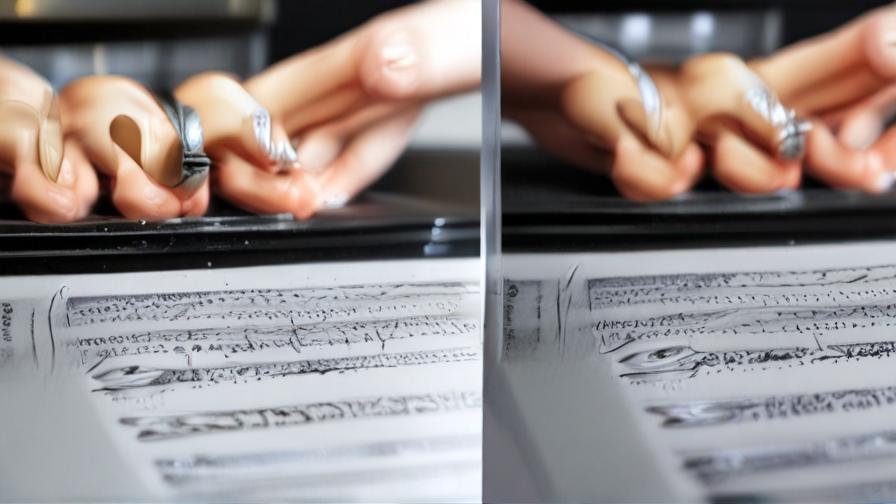
How to use "custom o-ring"
A custom o-ring is a torus-shaped sealing device specifically designed and manufactured to meet particular requirements or dimensions that standard o-rings cannot fulfill. Here's a concise guide on how to use a custom o-ring:
1. Determine Requirements: Identify the size, material, and application-specific requirements (such as temperature, chemical exposure, and pressure) that necessitate a custom o-ring. This ensures that the o-ring will perform effectively in your specific environment.
2. Design and Spec Out: Work with a supplier or use design tools to create precise specifications for your custom o-ring. This might include inner diameter (ID), outer diameter (OD), cross-sectional diameter (CSD), and tolerance levels.
3. Ordering: Place an order with a reputable manufacturer who can produce the o-ring according to your bespoke specifications. Ensure all relevant details are communicated clearly.
4. Inspection: Upon receiving the custom o-ring, perform a quality check. Verify that it matches the specified dimensions and material properties. This step can prevent future failures due to manufacturing errors.
5. Installation Preparation:
- Clean Components: Ensure the surfaces where the o-ring will be seated are clean and free from debris.
- Lubrication: Lightly lubricate the o-ring with an appropriate lubricant to reduce friction during installation.
6. Installing the O-Ring: Gently stretch or compress the o-ring into place. Avoid twisting the o-ring, which can lead to improper seating and potential sealing failure. Use tools like o-ring picks or installation cones if necessary.
7. Assembly: Carefully assemble the mating components, ensuring that the o-ring remains seated correctly.
8. Testing: After installation, conduct pressure or leak tests as applicable to ensure the o-ring is sealing effectively.
9. Maintenance: Monitor the system regularly for any signs of wear or failure. Replace the o-ring as needed to maintain optimal performance.
By following these steps, you can effectively utilize a custom o-ring in your specific application, ensuring reliable sealing and extended component life.
"custom o-ring" Comparative Analysis
When considering custom O-rings, understanding their comparative benefits and limitations is crucial for making informed decisions tailored to specific industrial or mechanical needs. Here’s an analysis comparing key parameters:
1. Material Diversity:
- Advantages: Custom O-rings can be manufactured from a variety of materials including Nitrile (NBR), Silicone, Fluorocarbon (Viton), Ethylene Propylene Diene Monomer (EPDM), and more. This allows for application-specific customization, leveraging attributes like chemical resistance, temperature tolerance, and flexibility.
- Disadvantages: The selection process requires an in-depth understanding of the operational environment and compatibility which might necessitate expert consultation.
2. Size and Shape Flexibility:
- Advantages: Unlike standard O-rings, custom ones can be produced in unique sizes and shapes, ensuring an optimal fit and enhanced sealing performance for non-standard or unique applications.
- Disadvantages: Customization in shape and size can lead to higher manufacturing costs and longer lead times compared to off-the-shelf solutions.
3. Performance in Extreme Conditions:
- Advantages: Custom O-rings can be tailored to withstand extreme pressures, temperatures, and aggressive chemicals, boosting the lifespan and reliability of the components they seal.
- Disadvantages: Extensive testing is often necessary to verify that the custom specs will perform as needed under extreme conditions, which can be time-consuming and costly.
4. Cost Efficiency:
- Advantages: For specialized applications, custom O-rings can prevent costly failures and downtime, offering long-term savings. They can also optimize material use and prevent waste.
- Disadvantages: Initial costs for design, prototyping, and small-scale production runs are generally higher compared to mass-produced standard O-rings. This makes them less economically viable for common, less critical applications.
5. Lead Time:
- Advantages: When large quantities are ordered or reorders are needed, custom O-ring suppliers can streamline the production process, potentially reducing lead times.
- Disadvantages: First-time orders typically face longer lead times due to the bespoke nature of the design and production setup, which isn't ideal for urgent needs.
In conclusion, custom O-rings offer significant advantages in tailored performance and application-specific customization but come with trade-offs in terms of cost, lead time, and the need for precise specifications and testing. Balancing these factors is essential to leverage their full potential effectively.
"custom o-ring" Warranty and Support
When it comes to custom O-rings, warranty and support are critical factors to consider, ensuring customer satisfaction and product reliability.
Warranty:
Custom O-rings are typically backed by a manufacturer's warranty, which guarantees the product against defects in materials and workmanship. The duration and specific terms of the warranty can vary based on the manufacturer. Generally, the warranty covers:
- Material Defects: Assurance that the O-ring material meets the specified standards and is free from flaws.
- Dimensional Accuracy: Guarantee that the custom O-rings adhere to the provided dimensional specifications.
To make a warranty claim, customers usually need to provide proof of purchase and details of the defect. Warranties often exclude damages resulting from improper installation, misuse, or exposure to conditions beyond the material's specified limits.
Support:
Support for custom O-rings encompasses several key areas:
- Technical Assistance: Expert advice on material selection, design specifications, and installation procedures to ensure optimal performance.
- Installation Guidance: Detailed instructions and support for proper O-ring installation to prevent issues such as leaks or premature failure.
- Replacement and Repair Services: Options for replacing defective O-rings or repairing damaged ones within the scope of the warranty.
- Customer Service: Responsive customer service teams to address inquiries, resolve issues, and provide ongoing support.
Manufacturers may also offer resources such as FAQs, technical documents, and online chat support to assist customers. Ensuring comprehensive warranty and support for custom O-rings enhances product reliability and boosts customer confidence.
In summary, a robust warranty supports the integrity of custom O-rings, covering material and workmanship defects. Comprehensive support services—from technical assistance to customer service—ensure that customers receive the guidance and solutions they need for optimal O-ring performance.
List "custom o-ring" FAQ
Custom O-Ring FAQ
1. What is a custom O-ring?
A custom O-ring is a circular sealing element designed to meet specific dimensions, materials, and requirements that standard O-rings do not address.
2. Why would I need a custom O-ring?
Custom O-rings are essential when standard sizes or materials do not meet your application’s needs, such as unusual dimensions, unique operating conditions, or specific regulatory requirements.
3. How do I determine the right size for my custom O-ring?
To determine the correct size, measure the inside diameter (ID), outside diameter (OD), and cross-sectional thickness of the groove where the O-ring will fit, or provide detailed application specifications.
4. What materials can be used for custom O-rings?
Materials include nitrile (NBR), silicone, fluorocarbon (FKM/Viton), EPDM, neoprene, and many others. The choice depends on the application's temperature range, chemical exposure, and mechanical stress.
5. How long does it take to manufacture a custom O-ring?
Lead times vary but can range from a few days to several weeks, depending on the complexity, material availability, and order volume.
6. Can custom O-rings be made to meet industry standards?
Yes, custom O-rings can be manufactured to comply with various industry standards, such as FDA, ISO, RoHS, and MIL-SPEC regulations.
7. What are the cost factors involved with custom O-rings?
Costs depend on material, size, production volume, and any specific compliance or performance requirements.
8. Are there minimum order quantities for custom O-rings?
Minimum order quantities vary by manufacturer, but many providers can accommodate small quantities or prototypes, especially for high-value or critical applications.
9. How do I ensure the quality of custom O-rings?
Choose manufacturers with stringent quality control, certification, and experience in your industry. Request samples, detailed specifications, and test reports if necessary.
10. Can I get a quote for custom O-rings?
Yes, you can get a quote by providing detailed specifications, including dimensions, material, quantity, and intended application to manufacturers or suppliers.
By addressing these common questions, you can better understand the process and considerations involved in acquiring custom O-rings tailored to your specific needs.
Top 10 FAQ with answer about custom o-ring for Buyer Sourcing from China
Sure, here are the top 10 FAQs with concise answers for buyers sourcing custom O-rings from China:
1. What is the Minimum Order Quantity (MOQ)?
- Answer: The MOQ varies by manufacturer but typically ranges from 1,000 to 10,000 pieces based on material, size, and customization needs.
2. What materials are available for custom O-rings?
- Answer: Common materials include Nitrile (NBR), Silicone (VMQ), Viton (FKM), Ethylene Propylene (EPDM), and Polyurethane (PU).
3. How can I ensure the quality of the O-rings?
- Answer: Opt for suppliers with ISO 9001 certification, request material certifications, and consider third-party inspections before shipment.
4. What are the lead times for production?
- Answer: Lead times typically range from 2 to 6 weeks depending on the complexity of the order and the factory’s current workload.
5. Can suppliers provide custom sizes and shapes?
- Answer: Yes, most suppliers can manufacture O-rings to your specific dimensions and profiles if provided with detailed drawings or samples.
6. What are the payment terms?
- Answer: Common payment terms include 30% deposit upfront and the remaining 70% before shipment, though terms can be negotiated.
7. How do I handle logistics and shipping?
- Answer: Suppliers usually handle shipping arrangements; options include air freight for quick delivery or sea freight for cost savings.
8. Are samples available before placing a bulk order?
- Answer: Yes, most suppliers offer samples, but there may be a sample fee and shipping costs that might be refunded upon order confirmation.
9. What is the process for a custom order?
- Answer: Provide detailed specifications, review quotations, finalize molds/drawings, approve sample prototypes, and then go into bulk production.
10. How do I communicate effectively with a Chinese supplier?
- Answer: Use clear, simple English. Employ translation tools if necessary, and confirm all details in writing to avoid misunderstandings. WeChat and email are commonly used communication channels.
These concise points should help streamline the process of sourcing custom O-rings from China.

